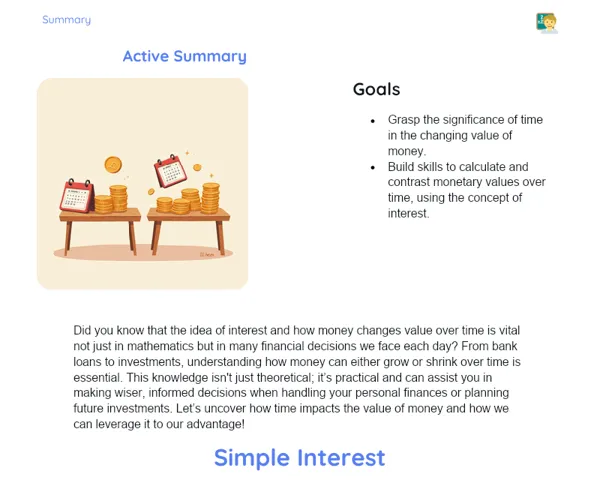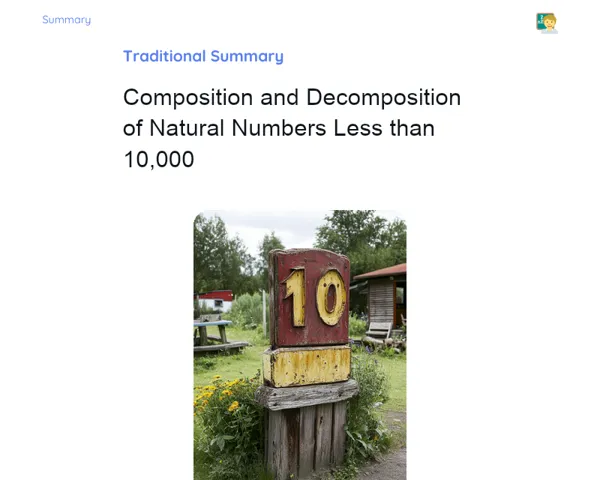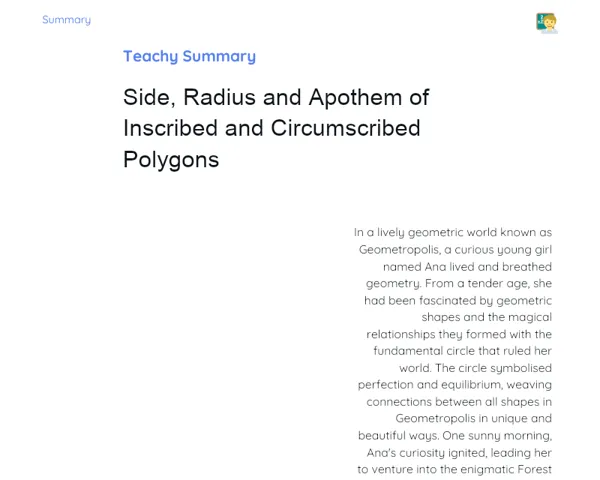Objectives
1. 📖 Understand the concept of Arithmetic Progression (A.P.), recognising its structure and properties.
2. 📖 Develop the skill to calculate specific terms in an A.P. using the general formula and increment patterns.
3. 📖 Apply knowledge of A.P. to various situations in life and more complex maths problems, fostering both practical and theoretical perspectives.
Contextualization
Did you know that Arithmetic Progression isn't just a maths concept, but also a vital tool in various fields, including music? Many compositions are based on arithmetic sequences to create harmonious melodies. For instance, if you play piano keys in an arithmetic sequence, the spacing between the notes remains consistent, producing a regular and harmonious sound. This highlights how maths seamlessly intertwines with art and our everyday experiences, showcasing the value of understanding and applying concepts like A.P.!
Important Topics
Definition of Arithmetic Progression (A.P.)
An Arithmetic Progression is a sequence of numbers where the difference between any two consecutive terms remains constant. This consistent difference is referred to as the common difference. For example, in the A.P. 2, 4, 6, 8..., the difference is 2.
-
To determine whether a sequence is an A.P., check if the difference between consecutive terms is always constant.
-
The general formula for the term 'n' of an A.P. is a_n = a_1 + (n - 1)d, where a_1 is the first term and 'd' is the difference of the A.P.
-
A practical application: Budgeting, where arithmetic progression can be used to calculate interest or regular payments.
Calculation of Specific Terms
Calculating specific terms of an A.P. is essential for solving maths problems and applying them in real-life scenarios. This calculation uses the general formula, allowing us to find values based on the first term, common difference, and the desired term number.
-
The formula a_n = a_1 + (n - 1)d enables you to determine any term 'n' of an A.P., a critical skill for tackling maths problems and everyday challenges.
-
Practicing the calculation of terms reinforces understanding of how A.P. functions and the impact of the common difference on the sequence.
-
Example: Finding the 10th term of an arithmetic progression starting at a_1 = 3 with d = 2 gives 3 + (10-1) * 2 = 21.
Practical Applications of A.P.
Beyond being a mathematical concept, Arithmetic Progressions are frequently encountered in real-world contexts. These applications can range from basic financial calculations to intricate engineering designs, underlining the importance of understanding A.P. outside of textbooks.
-
In engineering, A.P.s are used to design structures such as staircases or wheel rims, ensuring consistent spacing between elements.
-
In computer science, A.P.s can optimise algorithms and sequences of operations that must be executed at regular intervals.
-
In daily life, grasping A.P. can aid in organising and planning tasks, like drawing up schedules or managing resources.
Key Terms
-
Arithmetic Progression (A.P.): A sequence of numbers where the difference between any term and the previous term is consistently the same.
-
Common Difference (d) of the A.P.: The constant that determines the difference between consecutive terms in the A.P.
-
General Term (a_n) of the A.P.: The formula used to calculate any term in the arithmetic sequence, based on the first term, common difference, and target term number.
For Reflection
-
How can understanding Arithmetic Progressions benefit you in your daily life or future careers?
-
Why is it important to practice calculating terms in A.P., even when technology can perform those calculations?
-
In what ways can identifying A.P.s enhance your ability to tackle complex maths problems?
Important Conclusions
-
We delved into the intriguing world of Arithmetic Progressions (A.P.), learning how to identify, calculate terms, and apply this concept in real-life situations.
-
We recognised that in an A.P., the difference between any two consecutive terms is always the same, known as the common difference, which streamlines many calculations and practical applications.
-
We discussed how A.P. is not only a maths tool but also a fundamental skill across various fields, from music to engineering, demonstrating its significance and omnipresence.
To Exercise Knowledge
- Create an A.P. based on a theme of your choice (like a series of colours, songs, or books) and present it to the class, explaining its common difference and how you constructed the sequence. 2. Calculate the tenth term of an A.P. starting with 6 and having a common difference of 3. 3. Challenge yourself to solve a real-life problem using A.P., such as scheduling tasks over a week while ensuring a progression in the number of tasks per day.
Challenge
Mystery Sequence Challenge: Design a sequence of numbers that may seem like an A.P. at first glance, but actually isn't. Challenge a friend to find the 'hidden' common difference and explain why your sequence does not qualify as an A.P. Share your 'mystery' and the solution with the class!
Study Tips
-
Practice sketching graphs of A.P.s to visualise term behaviour, which can enhance understanding and retention of the concept.
-
Utilise maths apps that generate and explore A.P.s with various common differences and first terms, like 'GeoGebra' or 'Wolfram Alpha.'
-
Try connecting Arithmetic Progressions with other number sequences, such as Geometric Progressions or Fibonacci sequences, to see how these concepts relate and differ.



